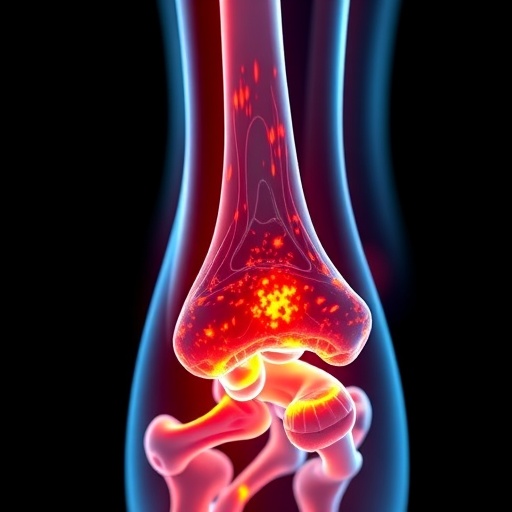New research may help change treatment practices for patients diagnosed with low risk thyroid cancer
PHILADELPHIA — Nearly a million Americans live with thyroid cancer and doctors will diagnose more than 50,000 new cases this year. Fortunately, the survival rate for this kind of cancer is one of the best. Five years after diagnosis, more than 98 percent of patients are survivors.
Now a team of researchers led by Alliric Willis, MD, a thyroid surgeon in the Department of Surgery in the Sidney Kimmel Medical College at Thomas Jefferson University and researcher with the Sidney Kimmel Cancer Center – Jefferson Health, finds nearly a quarter of low-risk thyroid cancer patients receive more treatment than necessary. The practice carries potential long-term risk to the patient and added financial costs. The discovery could help to shift how doctors treat thyroid cancer patients.
“Just as a patient can be at risk of under treatment, a patient can be at risk of over treatment,” says Dr. Willis, who published the work in the journal Surgical Oncology. “Our research really shines light on the fact that we are not treating all patients the same.”
The thyroid is a butterfly-shaped gland that sits over the airway in the neck. The gland makes hormones that help to control heart rate, blood pressure, body temperature and how the body uses energy. When cells grow out of control in the thyroid, cancer develops.
Typical treatment for thyroid cancers that have not spread to other parts of the body begins with surgical removal of the gland. After completing surgery, patients can then go on to receive a second therapy known as radioactive iodine ablation. Radioactive iodine ablation is therapy taken as a pill. Because iodine is preferentially taken up by the thyroid gland, which relies on iodine to produce hormones, the radiation dose becomes concentrated there. The high amount of radioactivity in the iodine kills off any lingering cancer cells. Historically, patients have had fantastic results with radioactive iodine ablation treatment, Dr. Willis says. But the therapy does not come without costs.
Experts estimate the financial cost of radioactive iodine ablation exceeds $9 million dollars per year across the country. Additionally, for several days to weeks after surgery, patients who receive the radioactive iodine treatment must stay away from small children and pets. “They’re virtually in isolation because the radioactivity will be on their clothing and on their sheets,” Dr. Willis says. The dose of radioactivity in the treatment is so high that airport security has picked up radioactivity from patients as well as their spouses.
The treatment also carries the risk of permanent long-term side effects such as altering patients’ perception of taste and the development of other cancers, particularly leukemia. Yet patients who have low-risk thyroid cancer–cancers that are small and have not spread to other parts of the body–do not benefit from the additional treatment. “Low-risk thyroid cancer patients have a five-year survival rate that is greater than 97 percent, whether they receive radioactive iodine ablation after appropriate surgery or not,” Dr. Willis says.
In 2015, the American Thyroid Association released guidelines for thyroid cancer treatment that indicated radioactive iodine ablation is not always necessary for patients with low-risk thyroid cancer. Based on the guidelines, Dr. Willis and team sought to identify groups of patients that are most at risk of being overly treated for thyroid cancer.
“This is really important when we’re talking population health and managing the increasing cost of health care by more effectively and efficiently using our resources,” says Dr. Willis.
The researchers analyzed more than 32,000 thyroid cancer cases identified through the National Cancer Institute’s Surveillance, Epidemiology, and End Results Program (SEER) database. They found more than half of patients were low-risk. About 25 percent of the low-risk patients received radioactive iodine ablation treatment, the researchers report.
Patients younger than 65 years old were most at risk of overtreatment, according to the study. Men were also more at risk of over treatment as were Hispanic and Asian patients.
“Young healthy patients are certainly going to be willing to receive whatever treatment may benefit them, but again we’re talking about something that’s been demonstrated to be over treatment,” Dr. Willis says.
Some low-risk patients had their lymph nodes removed in addition to the thyroid gland, even when the cancer had not spread to the lymph nodes. These patients were more likely to go on and have radioactive iodine ablation treatment.
“That’s particularly interesting because that tells you they may be in a setting where people are more aggressive in their approach to surgery and subsequent treatments,” Dr. Willis says. “This is where guidelines such as those outlined by the American Thyroid Association, can really help. The guidelines can say this more extensive treatment is unnecessary. You will not have better outcomes because of it.”
Dr. Willis hopes that his team’s research will make people more aware of the fact that some patients are at risk of over treatment. “I think it will make people more mindful of following recommended guidelines with all patients so that we can give each patient the most effective treatment and get the best outcomes possible,” he says.
###
Article reference: Ambria S. Moten, Huaqing Zhao, Alliric I. Willis, “The overuse of radioactive iodine in low-risk papillary thyroid cancer patients,” Surgical Oncology, https://doi.org/10.1016/j.suronc.2019.05.011, 2019.
Media Contact: Edyta Zielinska, 215-955-7359, [email protected].
Media Contact
Edyta Zielinska
[email protected]
http://dx.




